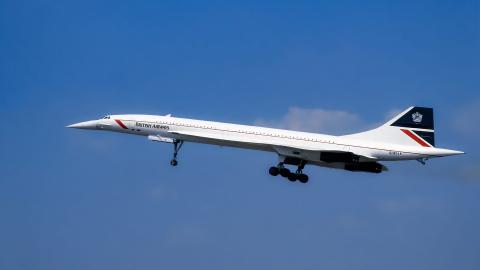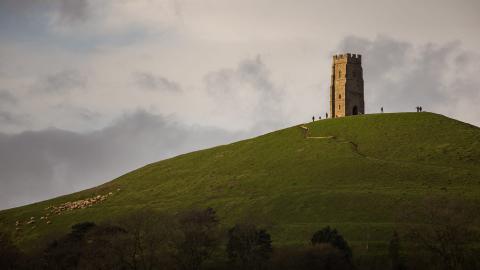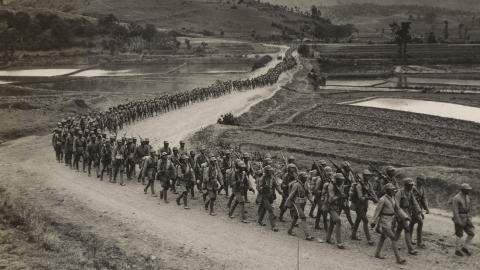The train carriage where two armistices were signed
Signing in the same railway carriage the Germans had surrendered in 1918 was the ultimate humiliation. Hitler had meant it to be so.
The Compiègne wagon: One carriage two peace treaties
Adolf Hitler leaned forward to read the inscription on the Alsace-Lorraine monument. 'Here on the eleventh of November 1918 succumbed the criminal pride of the German empire,' the inscription read, 'vanquished by the free peoples which it tried to enslave.'
His face blazed with contempt and rage. The monument depicted a German Imperial Eagle impaled on the point of a sword. It had been constructed in 1927 and placed in a memorial park in a forest near the city of Compiègne along with a statue of the French Marshal Ferdinand Foch and the railway carriage in which the Germans had signed their surrender on the 11th of November 1918.
Hitler was there on June the 21st 1940 to open negotiations for the signing of another armistice, and this time it was the French who would be surrendering to the victorious Third Reich. For the occasion, the original railway carriage in which the 1918 armistice had been signed was placed on the exact same spot it had occupied twenty-two years before. The following day, the defeated French signed the armistice, agreeing to end hostilities and to the occupation of three-fifths of France.
Signing in the same railway carriage the Germans had surrendered in 1918 was the ultimate humiliation. Hitler had meant it to be so.
How very different things had been just over two decades before. By November 1918, the Central Powers had all sued for peace save for Germany. With an Allied invasion imminent, the Germans sent a delegation to the Supreme Allied Commander of the Allies, Marshal Ferdinand Foch, who was at his headquarters in a converted railway carriage in the forest of Compiègne in northern France.
Built in 1914 in the suburbs of Paris, the carriage was originally used by the Compagnie Internationale des Wagons-Lits, the company best known for operating the luxurious Orient Express line. Used throughout the war as a dining car, the carriage was commandeered by the French Army in August 1918 and refitted as the mobile headquarters for Marshal Foch.
To many Germans – Adolf Hitler included – the signing of the armistice in the forest of Compiègne was the ultimate betrayal and a national humiliation.
It was to this carriage that a small party of German officers and politicians travelled on the 8th of November. They were under the mistaken impression that they were there to negotiate terms. Foch made it clear that they were, in fact, there to sign Germany’s unconditional surrender. Three days of fruitless negotiations followed before the Germans signed the armistice, lodging a formal complaint about the harsh terms imposed on Germany by the victorious Allies.
To many Germans – Adolf Hitler included – the signing of the armistice in the forest of Compiègne was the ultimate betrayal and a national humiliation. To the French, it was one of their greatest moments of triumph.
After the war, the carriage was briefly put back into service as a dining car with Compagnie Internationale des Wagons-Lits. However, realizing they had an important piece of world history being used as a rolling restaurant, the company decided to donate the carriage to the French Army Museum in Paris. There it stayed on display until 1927, when the mayor of Compiègne requested it be moved to a new ‘Glade of the Armistice’ which was being constructed as a permanent memorial to the end of World War I.
Adolf Hitler specifically chose the location and the carriage as the place where France would sign her surrender after the country’s humiliating defeat in the Battle of France.
Housed in a specially-constructed building called the Clairière de l'Armistice, the fully-restored carriage took pride of place at the memorial site for the next twenty-two years. As it did so, storm clouds were gathering across the continent.
The peace of the Glade of the Armistice was shattered in June 1940, when Adolf Hitler specifically chose the location and the carriage as the place where France would sign her surrender after the country’s humiliating defeat in the Battle of France. For Hitler, it was the ultimate act of revenge.
Following the signing of the second armistice, the Nazis seized the carriage and transported it to Germany. The Glade of the Armistice was almost completely destroyed, save for the imposing statue of Marshal Foch. Hitler - a man who never missed an opportunity to rub his enemies’ noses in it - wanted the statue of Foch to remain standing. For the duration of the war, Foch surveyed a shattered wasteland.
The carriage was put on display in Berlin in the Lustgarten – a large public park in the centre of the German capital near the Berlin Palace. There it would remain until 1945, remarkably surviving the pummeling the capital took from Allied bombers. However, as news broke that the Allies had advanced into German territory, the authorities decided to relocate the carriage outside of the city for safekeeping.
The carriage ended up in the small town of Ohrdruf in the state of Thuringia. Guarded by men of the SS, the carriage should have been safe from the ravages of war. Sadly, as American troops advanced on the town, the SS decided it could not fall into enemy hands and then be used for another humiliating armistice signing, so the decision was taken to destroy it, possibly with dynamite, but most likely by setting it on fire.
After the war, the Glade of the Armistice was fully restored and, in 1950, a renumbered carriage of the same design was placed in the Clairière de l'Armistice to form the centrepiece of the memorial. Of the original, just a few fragments of the carriage remain, as does the pen used to sign the armistice and an ashtray pocketed by one of the people present at the 1918 signing as a souvenir.
It’s been a hundred years since the armistice that ended the so-called ‘war to end all wars’ was signed in a converted dining car in a forest clearing in northern France. The carriage may be long gone, but its legacy lives on in the peace Europe has enjoyed for the last seven decades.
















